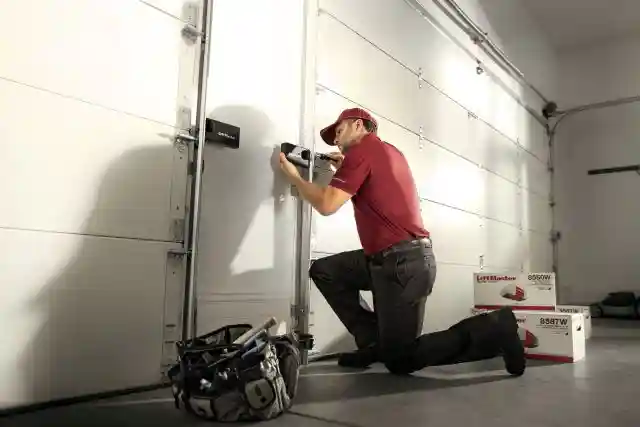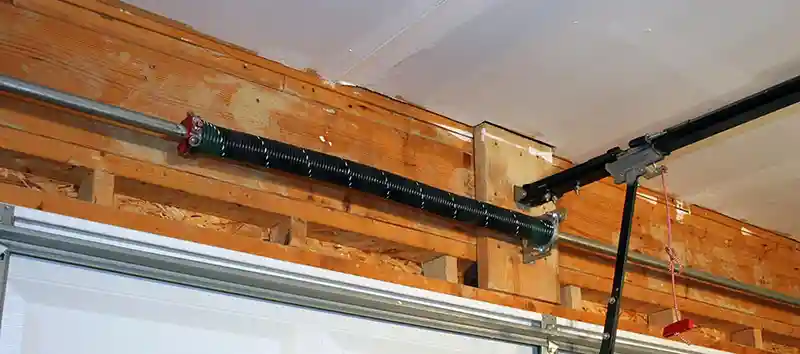
Garage Door Curb Appeal
For most homes, garage door curb appeal has a direct impact on the overall curb appeal of the home. Newer homes often feature the garage in a very prominent position and can occupy more than 50% of the street facing side of the house. So it’s no surprise that a great looking garage door adds a lot of value to the home. In this article, we dive in to some ideas on how you can make your garage door pop so you get the most value from your door.
Accessories
One of the most affordable ways to add sparkle to your garage door is by adding decorations to highlight the door area. Potted plants on either side of the door opening will frame the door so viewers are drawn into the overall look. In addition, homeowners can add shrubs or climbing plants on trellis to complete the garage door presentation. Consult with a professional landscape designer for more ideas. The key is to provide a visual “framing” of your garage door that complements the door without overpowering. The nice thing about adding accessories is that it’s affordable and easy to change. So use your imagination and creativity to let your vision shine!
Painting
Another affordable way to boost the visual impact of your garage door is with a fresh coat of paint. Most garage doors are made of aluminum, steel or wood that can be painted or stained so you have plenty of color options. The question is how much do you want the garage door to stand out from the rest of the street facing house? If you want the garage door to stand out from the rest of the house, bright, primary colors may be a good option. On the other hand, if you want the door to blend in with the rest of the visual, more subtle or neutral colors may be in order. If the front entry door is visible from the street, it’s usually a good idea to make that the focal point with colors that pop. In this case, the garage door plays more of a supporting role. If you’re having the exterior of your house painted, consult with your painter to get their ideas. They see a lot of combinations of colors and can provide valuable insights.
Upgrade The Garage Door
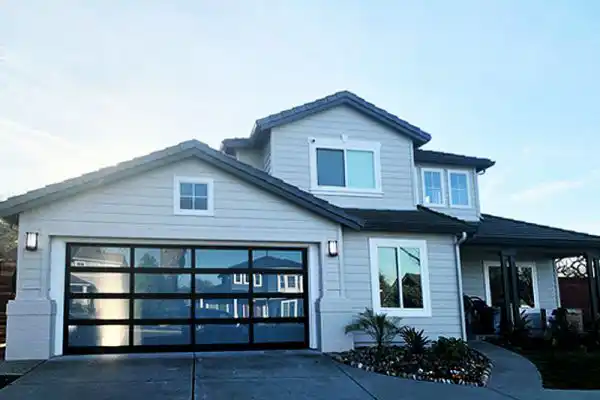 It goes without saying that upgrading your garage door is the best way to improve garage door curb appeal. There are an incredible array of options available to the homeowner that can at times be overwhelming. There are 3 major styles of garage doors with many variations within each category:
It goes without saying that upgrading your garage door is the best way to improve garage door curb appeal. There are an incredible array of options available to the homeowner that can at times be overwhelming. There are 3 major styles of garage doors with many variations within each category:
- Traditional: one of the most common styles featuring rectangular patterns with raised bordering between rectangles
- Carriage House: a broad category featuring rustic or barn-style elements. Very popular in rural and country settings with lots of decorative hardware choices and door materials
- Modern: featuring sleek design elements including reflective panels and frameless design options
Most styles will allow you to apply your own creativity with a number of design options such as garage door windows, hardware options, woodgrains and more. And while garage door insulation may not add much to your curb appeal, it’s worth considering as an option for both energy efficiency and resell value. For more help selecting a new garage door, check out our Garage Door Buying Guide.
Add Lighting
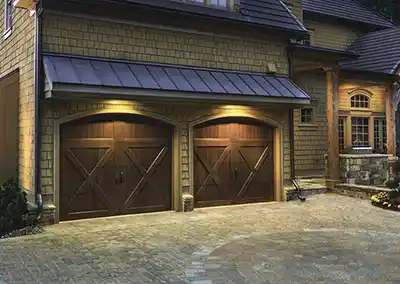 Adding exterior lighting around your garage door can really make your house dazzle at night. In addition, it adds safety and security to your property so it’s worth consideration. There is a huge variety of lighting choices for the homeowner including overhead and side lights. While the lighting is most effective at night, remember that the fixtures are visible during the day so choose a style that complements the overall look of your home.
Adding exterior lighting around your garage door can really make your house dazzle at night. In addition, it adds safety and security to your property so it’s worth consideration. There is a huge variety of lighting choices for the homeowner including overhead and side lights. While the lighting is most effective at night, remember that the fixtures are visible during the day so choose a style that complements the overall look of your home.
You can find lighting options that point light up or down to create different effects. If you’re not sure, drive around your neighborhood at night to see what others have done. Pointing them up may provide less lighting on the ground but can make a spectacular visual effect. On the other hand, pointing them down can highlight plants and accessories in the garage door area. And then you have some wall sconces that providing light patterns above and below that give the best of both.
Exterior lighting can add very dramatic garage door curb appeal to your home. We suggest contacting an electrician to find out what your options are for adding additional fixtures to your home.
Garage Door Curb Appeal Is Value
Studies show an upgraded garage door provide the best return on investment when boosting curb appeal for your home. These days, the garage door is one of the most prominent features of a home and is worth a close look to see how you can increase value and personal pride in your home.


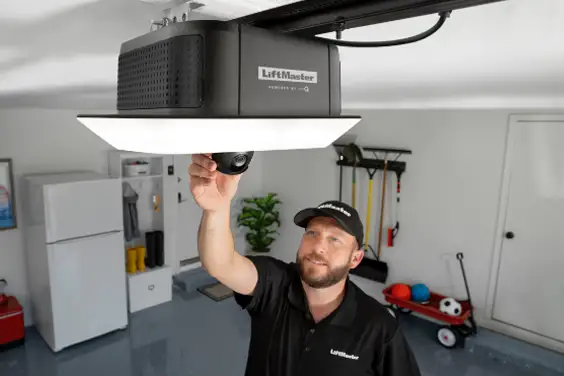 You press the wall switch that’s wired to the opener and you get nothing. Nada. No clicking. No lights, nothing at all. The simplest explanation in this case could be there’s no power to the unit. Make sure the opener is plugged in all the way and then make sure the breaker isn’t blown. If the breaker or fuse has blown, replace the fuse or re-engage the breaker. If they continue to blow, it’s likely there is a defect in the garage door opener and it will need to be replaced.
You press the wall switch that’s wired to the opener and you get nothing. Nada. No clicking. No lights, nothing at all. The simplest explanation in this case could be there’s no power to the unit. Make sure the opener is plugged in all the way and then make sure the breaker isn’t blown. If the breaker or fuse has blown, replace the fuse or re-engage the breaker. If they continue to blow, it’s likely there is a defect in the garage door opener and it will need to be replaced.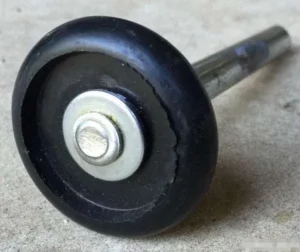 If your garage door tracks or
If your garage door tracks or 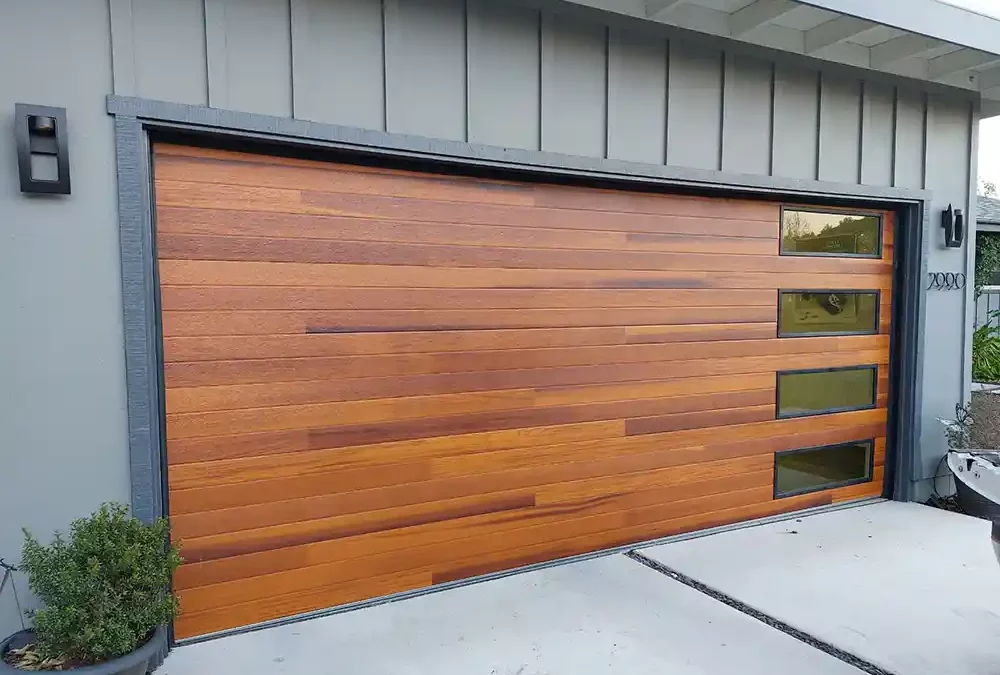
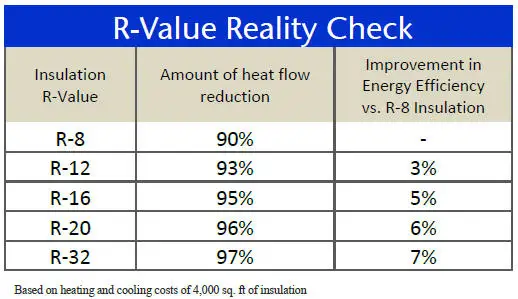 Garage door R-Values typically range from R-0 (no insulation) to around R-20. However, homeowners should understand that R-Values are not linear. In other words, an R-16 door doesn’t have twice the insulating capability of an R-8 door. To better understand this, refer to the chart. It’s important to note that an R-16 door only provides a 5% improvement in insulation, while an R-20 door offers just a 6% improvement. Therefore, there’s no need to spend exorbitant amounts of money for only marginal insulation gains.
Garage door R-Values typically range from R-0 (no insulation) to around R-20. However, homeowners should understand that R-Values are not linear. In other words, an R-16 door doesn’t have twice the insulating capability of an R-8 door. To better understand this, refer to the chart. It’s important to note that an R-16 door only provides a 5% improvement in insulation, while an R-20 door offers just a 6% improvement. Therefore, there’s no need to spend exorbitant amounts of money for only marginal insulation gains.